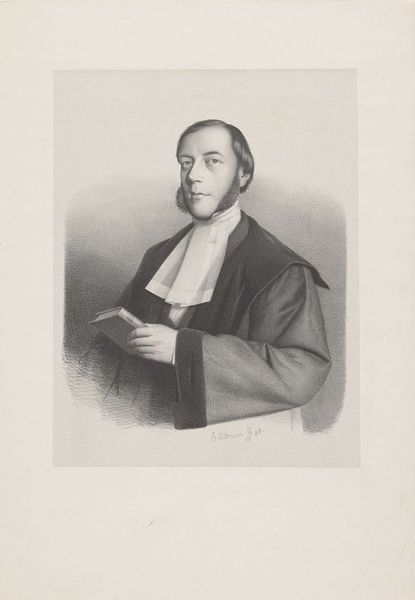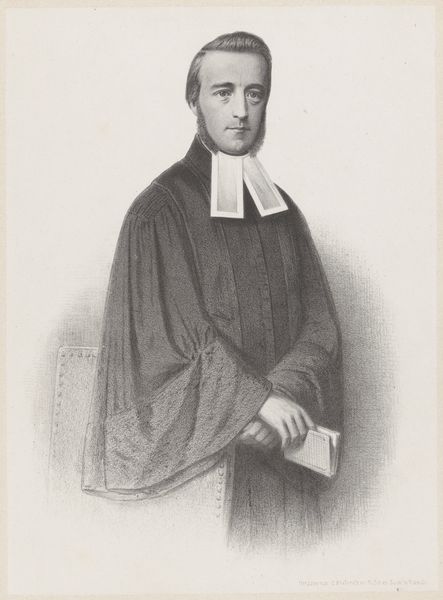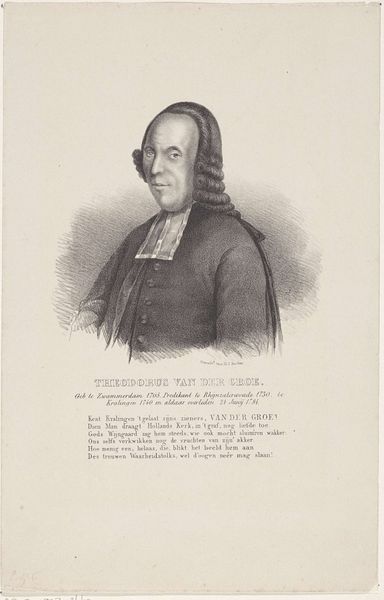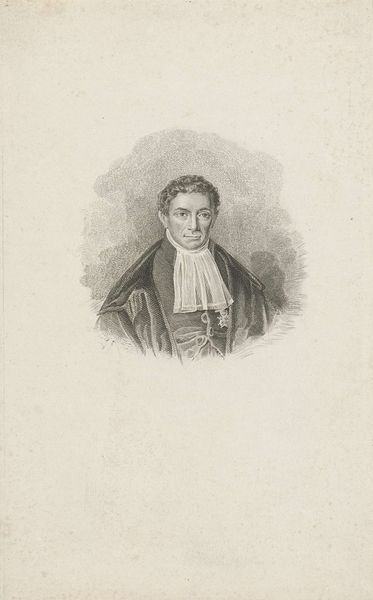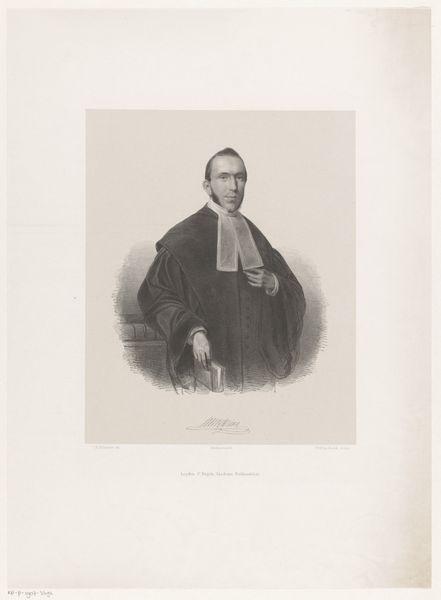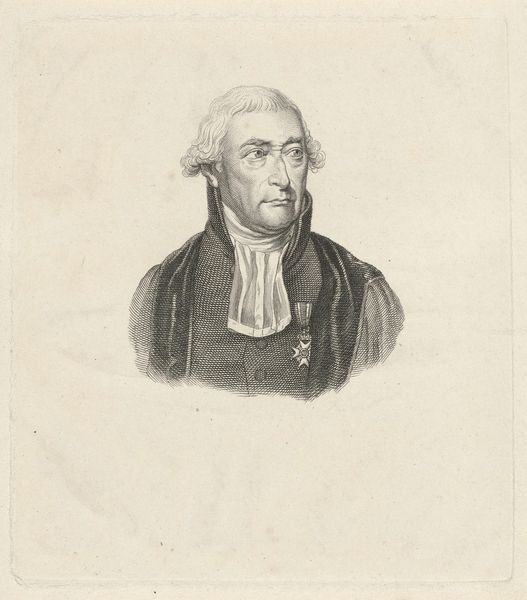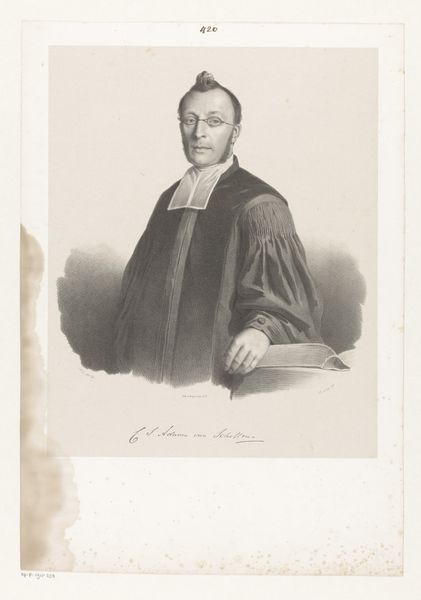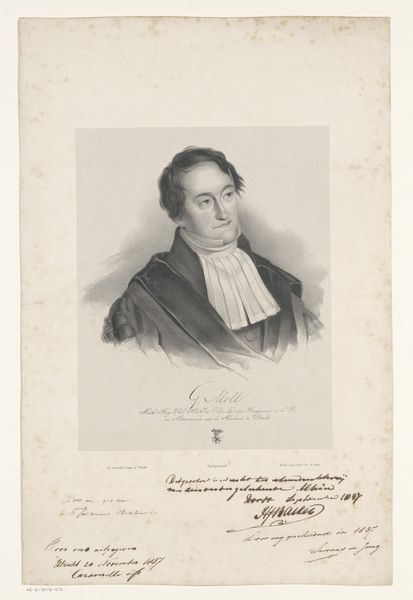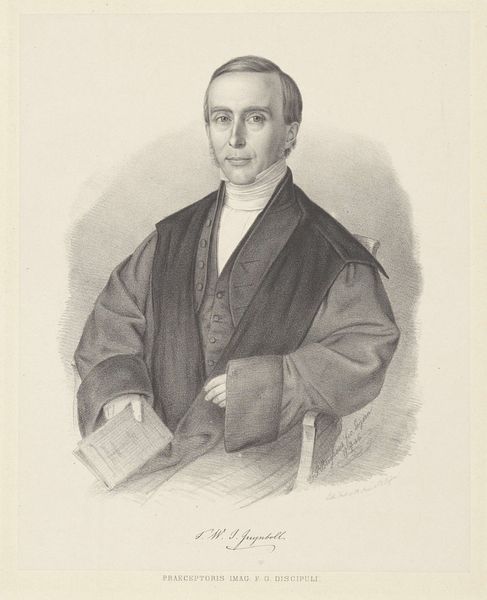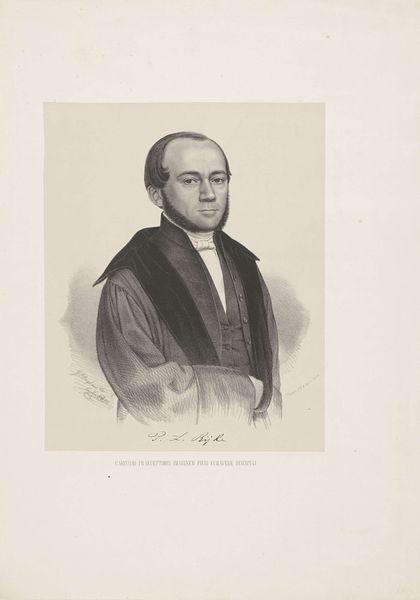
lithograph, print
#
portrait
#
16_19th-century
#
lithograph
# print
#
caricature
#
romanticism
#
portrait drawing
#
genre-painting
#
academic-art
Dimensions: height 285 mm, width 200 mm
Copyright: Rijks Museum: Open Domain
Editor: This is a lithograph from 1846 by Johan Daniel Ebersbach titled "Portret van Bartholomeus Theodorus Lublink Weddik," currently housed at the Rijksmuseum. I’m struck by its formal and rather austere feel, yet there's also something slightly unsettling about it. What stands out to you when you look at it? Curator: As a historian, what grabs my attention is the social context this portrait provides. Lithography, by the mid-19th century, was a relatively affordable method of printmaking. Consider how this medium allowed for a wider dissemination of images of public figures like Weddik. Who was he and what were the socio-political implications of distributing his portrait? Editor: It seems he was a clergyman. Does that affect your reading of the work? Curator: Absolutely. Think about the role of the church during this period. How did institutions shape the portrayal of their leaders, and how did the public consume those images? Was this portrait intended as a symbol of authority, piety, or something else entirely? Notice how the lithographic technique itself contributes to the portrait's overall message. Editor: I see your point about lithography influencing dissemination and messaging. The medium lends itself to a kind of formal accessibility, doesn't it? Almost like a campaign image. Curator: Exactly. The 'campaign image' concept resonates strongly when analyzing the socio-political intentions of the portrait, because this clergyman occupied a central position in the community’s power dynamic. So how might his image operate within a specific religious and cultural context? Consider, too, the influence of Romanticism in promoting certain ideals during that era. Editor: That's fascinating! I hadn’t considered how the social and political context influenced not only the subject but also the function of the portrait. I’m now wondering about how images like these reinforce social hierarchies. Curator: And that’s the crucial question to keep asking! Considering art as a reflection of – and a participant in – social and power dynamics offers valuable insight into any work.
Comments
No comments
Be the first to comment and join the conversation on the ultimate creative platform.
